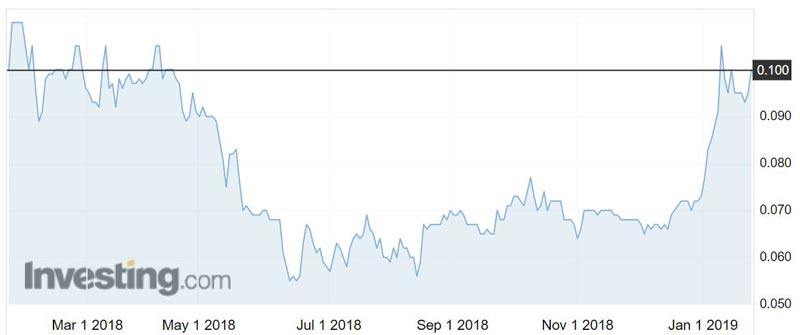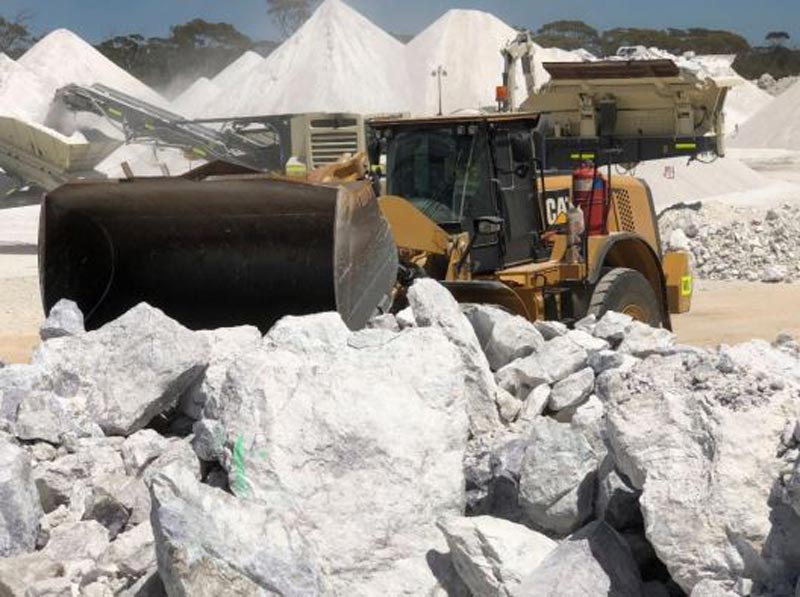Australia just started producing potash and is now shipping caesium too
Mining
Australian Potash has produced the country’s first ever potash at its processing plant in Canning Vale, south of Perth.
The company (ASX:APC) has produced sulphate of potash (SOP) with a purity of 98 per cent, equivalent to about 53 per cent potassium oxide (K2O), in its pilot run.
Australian Potash told investors the purity exceeded expectations and confirms its Lake Wells project in Western Australia’s goldfields as a low-cost, high-grade SOP producer.
The news moved shares up over 5 per cent to 10c on Tuesday morning.
Potash comes from salts that contain potassium in water soluble form. It is used as a fertiliser.
There are two commonly used fertilisers – muriate of potash (MOP) and sulphate of potash (SOP).
MOP is the most common (around 90 per cent of the world’s potash) and is used on a variety of crops. However, the more chloride-sensitive crops like avocados, coffee beans and cocoa require SOP – which fetches a premium over MOP.

The global potash market is estimated to be around 75 million tonnes.
About 60 million tonnes of that is MOP and roughly 7 million tonnes is SOP.
Demand is set to increase as the global population grows to around 8 billion by 2023.
Right now Australia imports all its potash from Canada, the Middle East and Europe. Australia’s MOP and SOP consumption is around 250,000 tonnes each year.
China and big plantation-focused countries in southeast Asia – like Malaysia and Indonesia – are expected to be the key contributors to demand growth.
>> Read: Potash stock guide: how the Pilbara could help feed the world
Managing director Matt Shackleton told Stockhead some of the initial 250kg produced in the first production run will be destined for a research program at UWA and some would be sent to China for testing by potential customers.
“We have got some memorandums of understanding in place already with some large Chinese agricultural companies and we are planning to stock up in China in March with some of the samples of the SOP that we produced,” he said.
“So the conversations that we’re having with our Chinese partners are at the point now where they want to see what we can produce and then they’ll analyse it chemically before we can take it to the next level.”
At full production, Australian Potash’s Lake Wells operation will produce about 150,000 tonnes per annum.
Although the company’s initial target is China, Australian Potash plans to sell its 53 per cent product to other markets in Southeast Asia and wants to establish a domestic market in Australia.
“53 per cent K2O never has been sold in Australia because we’ve never imported that grade because it was simply too expensive,” Mr Shackleton explained.
“Ultimately we would like to be selling something in the order of 50,000 tonnes a year into the Australian market, which is a big lot of SOP, and to do that we have to have a better price. We’re now working out what that incentive price is that we need to get WA farmers and Australian farmers to convert from MOP to SOP use.
Right now Aussie farmers pay about $650 a tonne for MOP and $1000 a tonne for SOP.
Another first
Pioneer Resources (ASX:PIO) is readying to farewell its first shipment of caesium this month.
The company only started mining Australia’s first caesium deposit in December last year.

Caesium is primarily used as a drilling fluid in high temperature/high pressure oil and gas drilling.
But mobile phones, GPS and the internet all operate with the help of a caesium clock, also known as an “atomic” clock. These clocks are extremely accurate in keeping time.
It is also used in vacuum tubes and radiation monitoring equipment.
Global supply is very constrained. Information on global caesium resources is limited, but the US Geological Survey says caesium can be found in Alaska, Maine, and South Dakota in the US.
It is also found in lower concentrations in brines in Chile and China and in geothermal systems in Germany, India, and Tibet. China is also believed to have caesium deposits.
Pioneer has now extracted 1640 tonnes of caesium from 19,000 tonnes of pollucite-bearing rock.
Pollucite is a high value rare caesium mineral that forms in extremely differentiated lithium, caesium and tantalum pegmatite systems. It co-exists with the lithium minerals, petalite and lepidolite.
The first shipment is due to set sail tomorrow from the Port of Esperance on WA’s south coast and is bound for the US under a sales agreement with Boston-based specialty chemicals and performance materials manufacturer Cabot Corporation.
Because caesium is not traded in commercial quantities, no market price is available for it, according to the US Geological Survey.
But Pioneer dug up 57 per cent more caesium than it was expecting to, which the company says “will greatly improve the revenue received”.
Pioneer has now finished mining stage one of its Sinclair caesium mine. Shipments are set to continue through to December this year.
Shares climbed nearly 6 per cent to 1.8c on Tuesday.